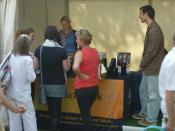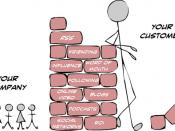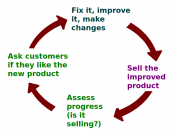Can these kinds of customer response data be obtained reliably, systematically, and cheaply enough for a restaurant? If so, how?
This type of data could be gotten by adding survey questions to a receipt given to a customer with a few questions relating to the Pareto chart (Ex B). This can also be done by observation of host (ess) when times are not busy noting customers body language. Also managers can go around to tables and ask how their meal was, and if anything was unsatisfactory. The important thing is to have a log of this data, which can be analyzed, at the end of each week and solutions implemented at the beginning of each week to try and resolve problems quickly as they develop.
One type of bias the restaurant may have to worry about is the concept of "self-selection", where a person who has a bad experience is more likely to voice their opinion than one who has not.
Another great example of how this data can be obtained is through benchmarking and competitive analysis, looking at how other competitors deal with their problems and applying the best solution to a given case. Benchmarking can easily help provide better service to customers by applying the "best practices" found in leading restaurants.
Which of the Exhibit B complaints are natural targets for continuous improvement in the restaurant (or any enlightened firm), thus, perhaps, not requiring solicitation of customer inputs to reveal the target for problem solving?
The of course obvious and most logical answer would be all elements could be improved upon. As we've discussed in class, "if you aren't improving your product/service your loosing ground." However I choose ones that could immediately be implemented through better training of the servers/busboys. In referencing the Pareto Chart of...


